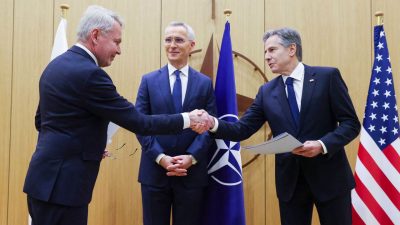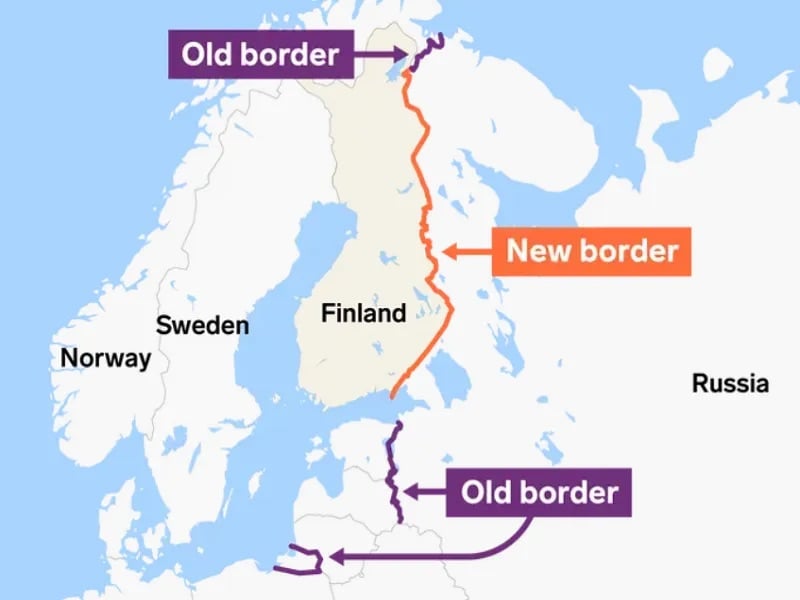Finland Is Hellbent on Positioning Itself as a Frontline NATO State Against Russia

All Global Research articles can be read in 51 languages by activating the Translate Website button below the author’s name.
To receive Global Research’s Daily Newsletter (selected articles), click here.
Click the share button above to email/forward this article to your friends and colleagues. Follow us on Instagram and Twitter and subscribe to our Telegram Channel. Feel free to repost and share widely Global Research articles.
***
Russian Deputy Foreign Minister Alexander Grushko said on Monday that his country will respond in accordance with its national interests if Finland closes the entirety of their joint border like the Finnish Interior Minister threatened to do last week. In the intervening days, the EU said that it’s ready to send forces to that frontier, Finland gassed a group of border crossers, and it also deployed soldiers there too. Taken together, Finland is clearly hellbent on positioning itself as a frontline NATO state against Russia.
It was assessed in summer 2022 that “NATO’s Northern Expansion Isn’t A Major Defeat For Russia” like the Mainstream Media misportrayed it as being and then earlier this spring that “Finland’s Membership In NATO Is More Symbolically Important Than Militarily”. Those conclusions reflected the state of military-strategic affairs at the time, but seeing as how the latter are changing as a result of Finland hyping up an alleged migrant crisis with Russia, so too should those assessments change accordingly.
The latest dynamics suggest that NATO is conspiring to place more pressure on Russia along the bloc’s new Finnish member’s frontier, which is intended to provoke reciprocal military moves that can then be decontextualized as so-called “unprovoked aggression” for justifying a self-sustaining cycle of escalation. It’s unclear how far and fast everything can move, but this seems to be the intent, which importantly comes amidst the bloc rethinking its proxy war on Russia through Ukraine.
This summer’s counteroffensive failed, Russia won the “race of logistics”/“war of attrition” with NATO, and that bloc’s former Supreme Commander recently argued for a Korean-like armistice, all of which is happening against the backdrop of the West reportedly pressuring Kiev to recommence peace talks. In the event that this proxy war freezes, then there’s a certain logic inherent in replacing some of this lost pressure upon Russia via the opening of other fronts like the Finnish one.
Granted, the “mutually assured destruction” (MAD) between NATO and Russia places very real limits on how much pressure can be exerted along this newfound front, but still opening it might be deemed by the bloc’s decision-makers to be better than keeping it closed in that scenario. In other words, “where one door closes, another opens”, or to be more direct, the end of NATO’s proxy war on Russia via Ukraine could lead to the opening of a less high-stakes but still destabilizing front in Finland.
This outcome would also serve the supplementary purpose of being exploited by the Mainstream Media as the “publicly plausible” pretext for accelerating the Arctic’s militarization. This “final frontier” of the New Cold War is poised to soon be a theater of competition between the US-led West’s Golden Billion and the Sino-Russo Entente due to the Northern Sea Route’s growing role in facilitating East-West trade. Considering this, hyping up the Finnish front like NATO is already doing “kills two birds with one stone”.
The case can thus be made that NATO has concluded that its hegemonic zero-sum interests are best advanced by opening up a “controlled” Finnish front against Russia, which could compensate for the partial closing of the Ukrainian one and push the bloc’s Arctic interests at the same time. For these reasons, Russian-Finnish tensions are expected to further worsen, and all moves that Russia makes in defense of its legitimate interests will be spun as “unprovoked aggression” to speed up these processes.
*
Note to readers: Please click the share button above. Follow us on Instagram and Twitter and subscribe to our Telegram Channel. Feel free to repost and share widely Global Research articles.
This article was originally published on Andrew Korybko’s Newsletter.


